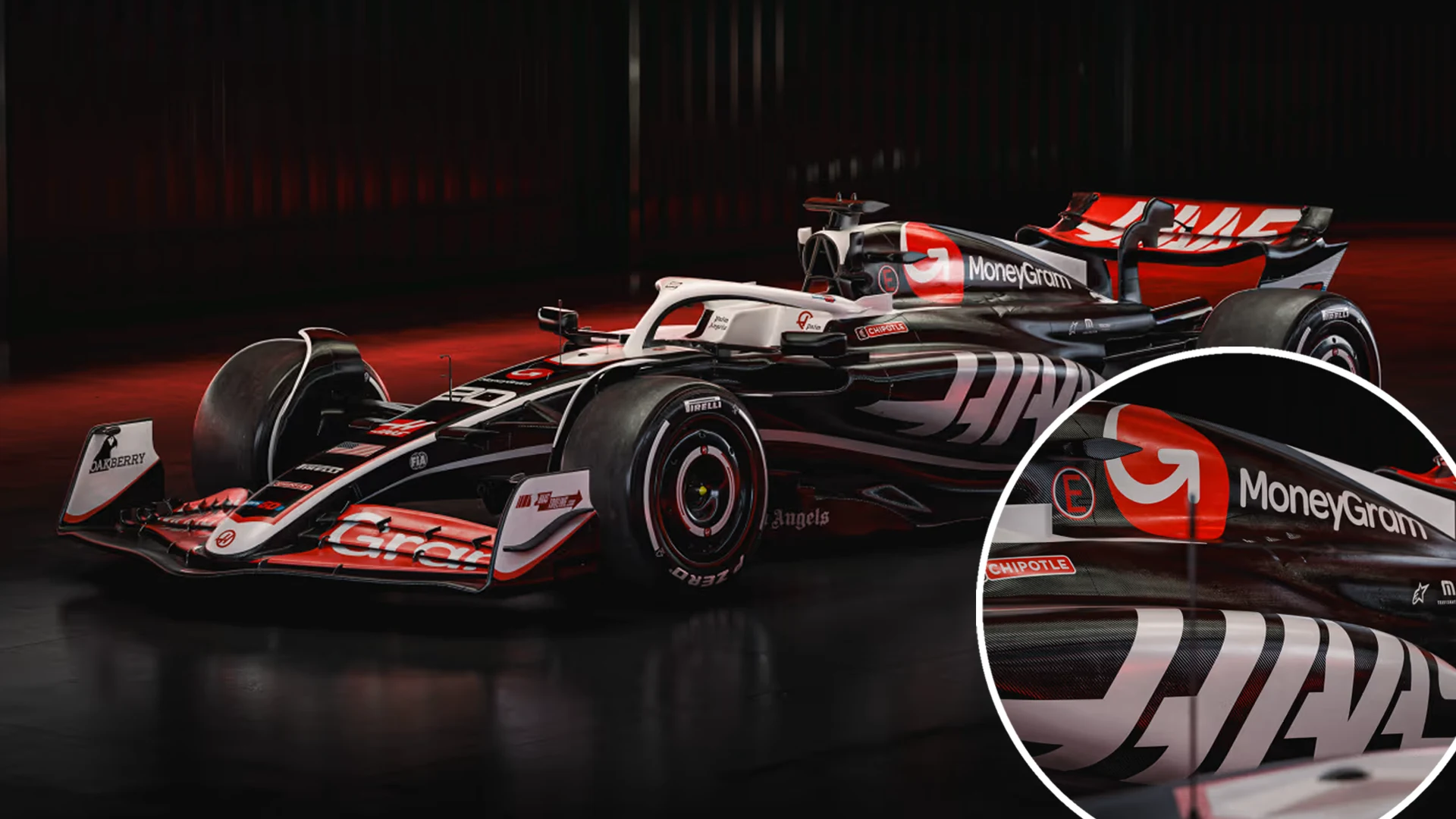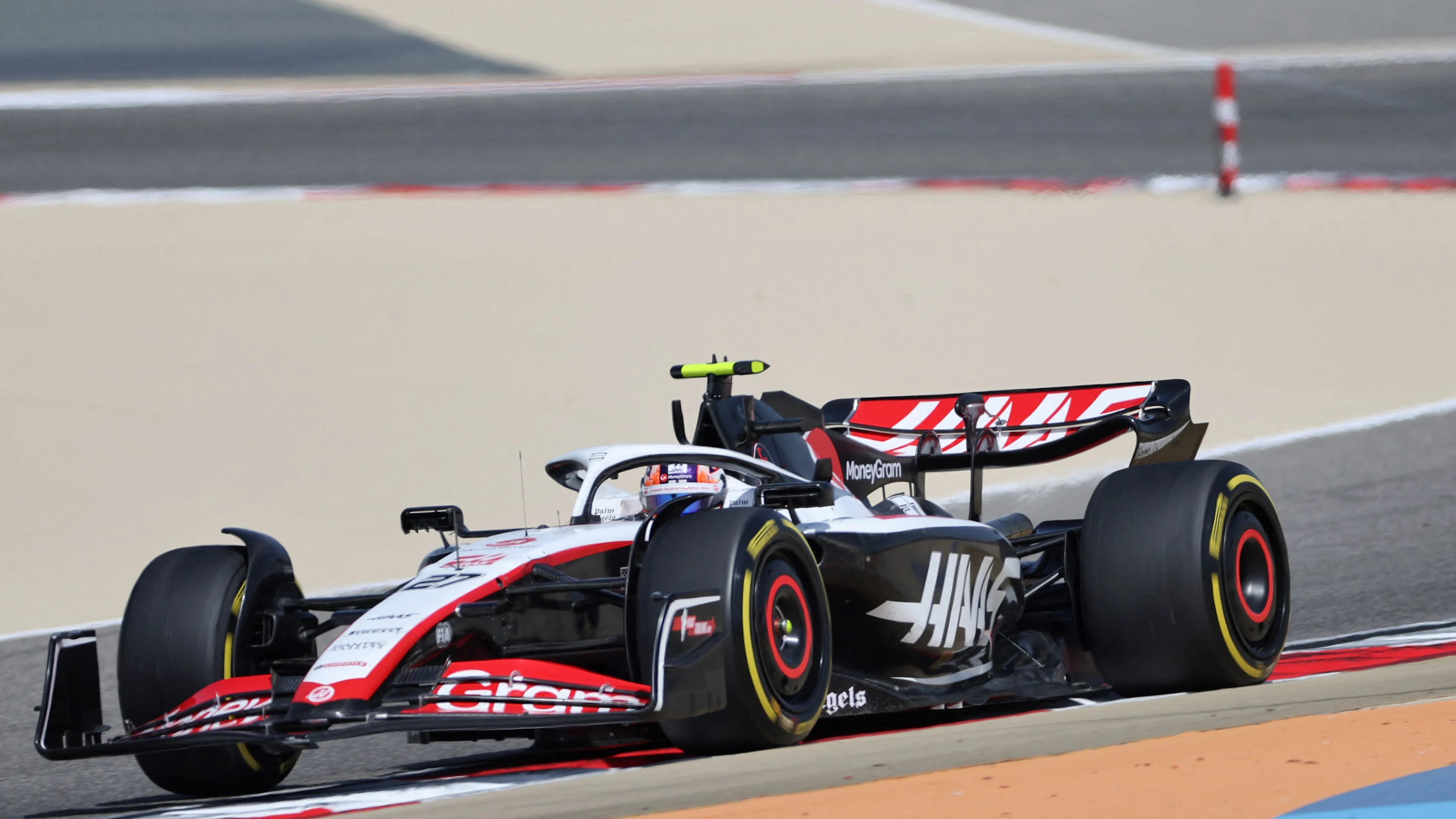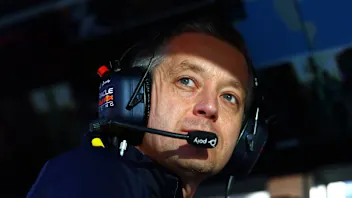TECH ANALYSIS: How the Haas VF-24 builds on their major upgrade in 2023


The Haas VF-24, the first 2024 F1 car to break cover (at least in rendered form), appears to be a straightforward evolution of the updated VF-23 introduced in Austin last year.
It follows that car’s move towards a more raised and heavily-shaped sidepod front which was a general theme among almost all the teams last season. But it takes it further by using the opportunity of a new chassis to relocate some of the radiator area further up around the car’s centreline and to move the lower side impact protection bar down.
FIRST LOOK: Haas showcase new look for 2024 challenger as livery is revealed
This has allowed that greater sculpting of the sidepod fronts, the idea of which is to give a greater separation between the airflow around the radiator inlets and that along the floor edges – and to enhance the vortex propagation as the airflow tumbles down the side of the sidepod front towards the floor edge.
The stronger this vortex, the more help the floor edges can give in enhancing the airflow between the rear wheel and diffuser. This, in turn, works the underfloor harder, increasing downforce.
.webp)
The relocation of the radiator area is evident also in the increased volume of the airbox on the engine cover.
These changes are in fact quite similar to those made by McLaren in Austria last year and by Alfa Romeo, AlphaTauri and Alpine in Singapore and reflect trends established by Red Bull. The Haas now looks visually up-to-date with the late-season ’23 cars and has moved away from the original Ferrari-influenced bulky out-washing sidepod fronts.
GALLERY: Every angle of Haas’s new livery for the 2024 F1 season
The suspension – which is supplied by Ferrari along with the power unit and gearbox – remains pushrod front/pullrod rear, giving an early indication that Ferrari has stayed with this layout too, in contrast to the pullrod front/pushrod rear of last year’s Red Bull and McLaren.

Team Principal Ayao Komatsu summarises the car as follows: “In terms of physical changes, as everyone knows, when we made the upgrade in Austin that was the concept towards this year’s car – but because we had the physical limitation of the side impact structure, rad-duct arrangement, and cooling arrangement, we couldn’t do the full-blown VF-24-type-concept. I knew exactly where we were going for this year, but everyone saw a preview in Austin.”
Komatsu is urging that expectations for the car, at least in its early-season form, should be kept in check, “because we started late and then we stopped for two months to do the Austin upgrade. It really diverted resource, so we lost time there, but the team is finding good gains in the wind tunnel, so that’s positive and in terms of characteristics, it’s going in the right direction.
F1 LAUNCHES: When will teams be presenting their new cars for the 2024 season?
"The Austin package means the VF-24 launch car may not be as advanced as it could be, but at the same time we have better confidence in what we’re putting out on track now. We’re all realistic that our launch car in Bahrain will not necessarily turn heads, but our concentration and focus is to work with the VF-24, understand the car, and then define the correct pathway to upgrade the car.”
Next Up
Related Articles
.webp) What F1 drivers have been up to over the festive holidays
What F1 drivers have been up to over the festive holidays Former Red Bull strategy chief Courtenay starts at McLaren
Former Red Bull strategy chief Courtenay starts at McLaren 14 drivers from different eras who raced together in F1
14 drivers from different eras who raced together in F1.webp) How F1 drivers recharge during the winter break
How F1 drivers recharge during the winter break Audi run 2026 car on track for the first time
Audi run 2026 car on track for the first time.webp) Where are all of Red Bull’s F1 graduates now?
Where are all of Red Bull’s F1 graduates now?